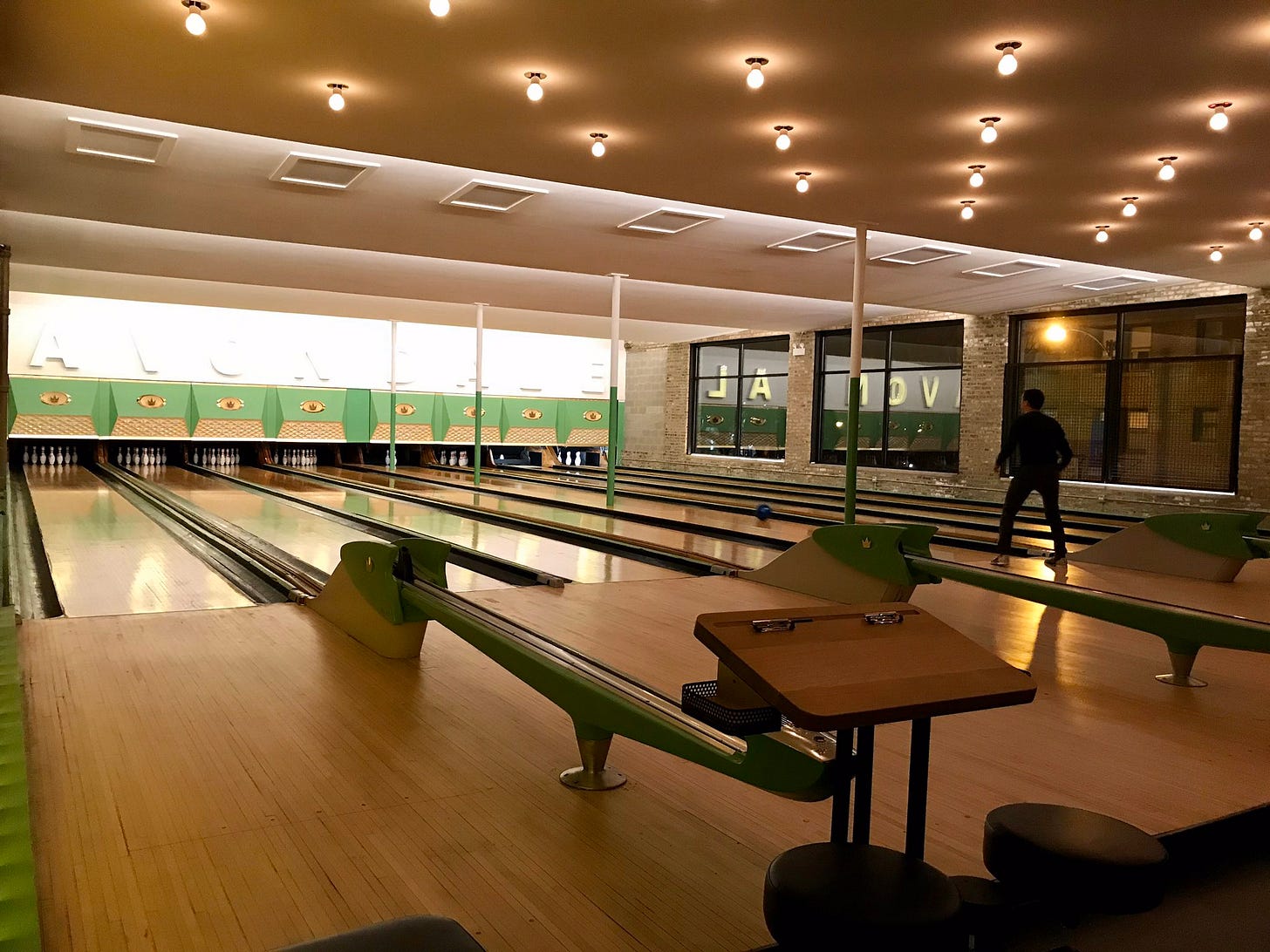Up your alley
The previous issue of Halgorithm was sent all the way back in December. Forgive me! I’m trying to figure out how to get back into a regular publishing schedule.
In the meantime, enjoy this little dispatch and a handful of links to recent stories I liked.
A NEW BOWLING ALLEY recently opened in my neighborhood. It’s a restoration of a second-story, eight-lane alley that operated from the 1920s to 1990s. It looks incredible.
There’s an interesting wrinkle, though: It’s all hand-scoring. Not a computer screen in sight.

From the 19th to the mid-20th century, bowling was almost exclusively considered a sport for blue-collar workers. It was associated with “saloon culture.” Between the dank basement vibes and gruff pin boys, bowling was not a “family experience.”
With the arrival of mechanized features — and clever marketing — that would change. The automatic pin setter was introduced in 1946. The screen that showed which pins were left came soon after. The automatic scorer arrived in 1967. The pesky pinboys were swept away, along with the old analog features and the seedy basement vibes. Alleys cordoned off lounges from main areas of play. Bowling got a makeover.
As a result, from the 1940s to mid 1960s the number of bowlers quadrupled. Women and kids were finally bowling. It was seen as a wholesome sport, advanced in its technology, optimized for the modern family.
Given this historical backdrop, I’m amused that hip bar owners opened up a bowling alley in my slowly-gentrifying neighborhood and designed it to evoke a pre-digital bowling era with a boomer basement aesthetic, paper score cards and above ground ball returns. (But cocktails, of course, still go for $12.)
“Today’s consumers,” it is said, “are searching for authenticity in an inauthentic world.”
Recent writing
🧵 Will Tech Solve Fashion’s Waste Problem?
Elsewhere
😵It Doesn’t Matter If Anyone Exists or Not
The crowd isn’t made up of people anymore, but of pictures that might be people, of corporate brands impersonating them, of young people dancing politically in TikToks, of tweets about youths in TikToks, of disputes absent referents, of bots shouting into the void. [The Atlantic]
📱What’s a Quibi? A Way to Amuse Yourself Until You’re Dead
This approach — to ironically acknowledge our worst impulses in hopes of justifying them — has become a recognizable strategy in contemporary advertising. [NYT Magazine]
💳This Brand Is Late Capitalism
These essays do a lot of work, but that work is less about identifying an under-reported phenomenon, or illuminating a new way of thinking about life under capitalism, and more about absolving readers of their participation, however active or enthusiastic, in it. [The Baffler]
🖨️Cost Cutting Algorithms Are Making Your Job Search a Living Hell
She has heard stories of people inserting common keywords in small white font on their PDF résumés, visible only to bots, to sneak into the next tier of candidates. [Motherboard]
🤳My Instagram
Instagram grows on subjectivity like a fungus whose shape and color varies from person to person, and to describe what it feels like to live with it is not to describe how it works. [n+1]
— Hal
